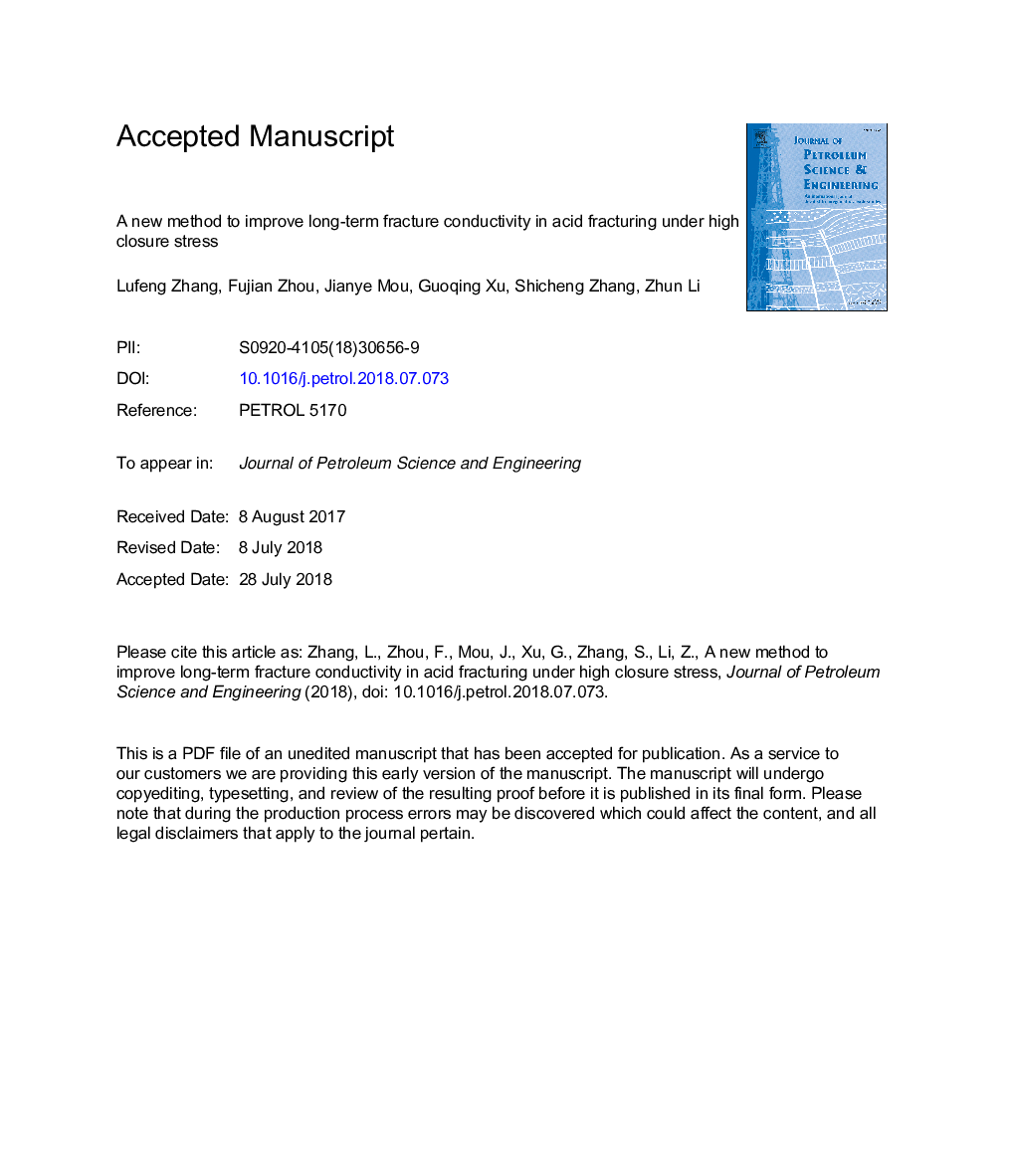| Article ID | Journal | Published Year | Pages | File Type |
|---|---|---|---|---|
| 8124387 | Journal of Petroleum Science and Engineering | 2018 | 25 Pages |
Abstract
Acid propped fracturing is one of the most effective methods to enhance the stimulation effect, especially in the high-temperature deep carbonate formation. However, the short-term conductivity experimental data used in existing acid fracturing optimal designs may not be directly applicable to the real case. Aiming at this problem, this paper conducted a research on long-term acid conductivity behavior and proposed a new method to raise acid fracture conductivity under high closure stress. Frist, a series of experiments with carbonate core samples were conducted to investigate long-term acid conductivity behavior of carbonate reservoirs with closure stress up to 100â¯MPa. Gelled and cross-linked acids with different acid-rock contact times were tested to analyze the effects of acid type and acid-rock contact time on the conductivity. Next, acid fracture conductivity by adding proppant was tested to investigate the feasibility of increasing acid fracture conductivity under high closure stress. Long-term conductivity was measured up to 168â¯h to analyze the impact of deformation and embedment of proppant on conductivity. Finally, proppant size and concentration on conductivity were optimized for maximizing conductivity. The study shows that the conductivity with gelled acid is higher than the case with cross-linked acid for the same contact time. When the contact time is 60â¯min, gelled acid fracture conductivity has already reached its upper limit. The ideal combination of proppant size and concentration are optimized at different stress level. When the closure pressure is below 50â¯MPa, the conductivity is the highest at the proppant concentration of 0.75â¯kg/m2 using 20/40 mesh proppant. While the closure pressure exceeds 50â¯MPa, the conductivity is the highest at the proppant concentration of 3â¯kg/m2 using 40/70 mesh proppant. The acid propped fracture conductivity decreases rapidly in 48â¯h and undergoes the gradual drop, remaining steady after 120â¯h. An analytical model of acid propped fracture conductivity was also developed. This study provided an insight into optimizing acid propped fracturing design and predicting well performance.
Keywords
Related Topics
Physical Sciences and Engineering
Earth and Planetary Sciences
Economic Geology
Authors
Lufeng Zhang, Fujian Zhou, Jianye Mou, Guoqing Xu, Shicheng Zhang, Zhun Li,
